UDIA National’s ‘A Plan for Prosperity’ comes at a critical phase in Australia’s recovery from the pandemic. We have seen the potential of the housing and construction industry to underpin the economy, together with the help of targeted government stimulus.
The power of housing construction to drive the Australian economy is immense, but our sector also faces enormous pressure with an increasingly constrained supply of developable land. For us to continue building Australia’s prosperity, housing supply must urgently be addressed, both to ensure that housing development can pull the economy into the next phase of growth and to prevent the spiralling affordability crisis.
“The 2022-23 Federal Budget will assist to keep demand high through the 50,000 Home Guarantee Scheme places and boosting the supply of affordable housing under additional NHFIC funding, but critical supply-side reforms are needed to ensure these initiatives succeed as intended.” said Max Shifman UDIA National President.
“Our political leaders need to adopt the reform set out in A Plan for Prosperity to remove the barriers and costs that block delivery of new housing supply, else we risk stalling productivity,” he said.
Development and Construction is an economic engine room for the economy as 9% of GDP, providing 11% of Australian full-time jobs. Each dollar spent is directly shared between 40+ trades and businesses, putting $2.90 into the broader economy for $1 dollar invested, but it is being jeopardised by constrained housing supply.
UDIA’s data shows that Australia’s future housing supply is perilously low, and the impacts are being felt across the entire housing spectrum. The UDIA’s State of the Land 2022 report forecasts that this year sales of greenfield lots could plummet as much as 43% from lack of supply which is fuelling ever increasing prices.
NHFIC’s research predicts housing shortfalls of 20,000pa by 2025 and the need for 727,000 social and affordable dwellings between 2016-2036.
Many of the affordability issues in urban and regional areas are the result of a chronic lack of development-ready land, not a lack of vacant space. Having sufficient zoned land is part of the issue in some areas, particularly the regions, where many of the problems are simply down to delays in planning and development approvals or a lack of enabling infrastructure. Improving these systems are matters that can be improved with some concerted effort by decision-makers at minimal additional cost.
“Our industry can continue its disproportionately positive economic impact with the adoption of some relatively straightforward policy choices as outlined in our national policy strategy for the 2022 Federal Election – A Plan for Prosperity,” said Mr Shifman.
“Many of the solutions we propose are clear and inexpensive, but necessary to prevent affordability and supply problems, or stalling economic growth. Federal political leadership should incentivise states and territories to boost development ready land, fast track enabling infrastructure and streamline planning and approvals,” he added.
—ends—
Media Enquiries:Deanna Lane | National Media & Communications Manager | 0416 295 898 | media@udia.com.au

